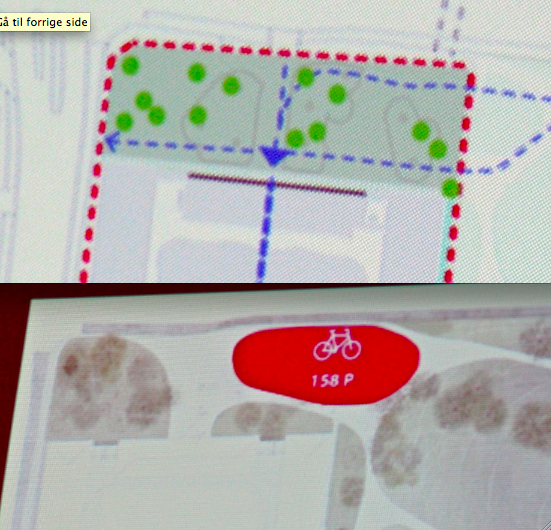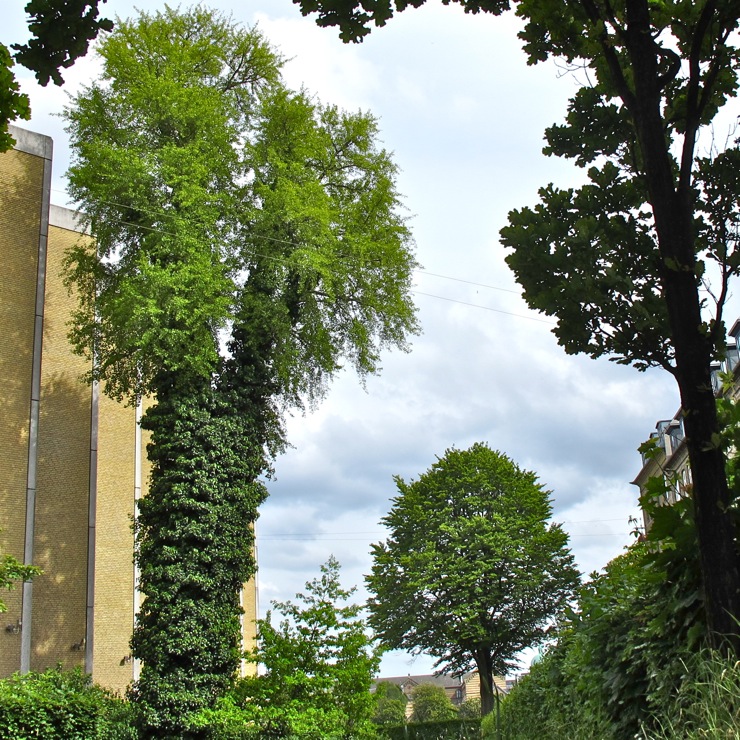On the corner of Møllegade and Guldbergsgade on Nørrebro, the city is preparing to fell fifteen out of eighteen big and healthy trees, for a tile square.
For two years we have fought to be heard, and make them incorporate as many trees as possible in the new design. We have exposed the department's lies to the following group and citizens wanting a green square, stating the trees were in poor condition and not worth preserving. Only when the plan was set, did they admit that the trees were healthy and it turns out many even marked as worth preserving.
At the audience for the Committee in charge of Technical- and Environmental Affairs, we handed over 2800 signatures, from citizens who want to preserve the trees on the square. The square is part of a larger plan for the area, of which a few other plans have been cancelled along the way: the petting zoo By Oasen survived, and the bike lane going straight through the City of The Elderly, was dropped. A plan no one wanted or needed.
The same can be said about a naked tile square. The project is in two parts: the kindergarten gets a new playground on the other side, and the recycling station will no longer be locked off. For a long time we believed that there would be a bike lane through the square, but it is a pedestrian affair only.
This big ash tree will be felled to make space for a toy shed for the kindergarten. Why can't they place that shed up against the new wall, facing the square? You don't cut down a big tree to place a shed for toys. You just don't!
At our audience we introduced a suggestion from the building specialists, recommending the use of screw foundations for the (other) shed. This would spare three big ash trees on the opposite side, along Møllegade. The Department admitted this was a viable option, sparing the roots of the trees, but we still don't know if they will take advantage of it. The citizens have not been granted even one more tree.
The democratic process in this case has been a disgrace. Our complaint was handled by the very people we complained about. They denied having lied to the following group and citizens, as proven by the health report that they provided much later. Sneaky.
Following this horrible process I have talked to everyone from the Ombudsman to The Environmental Board of Appeal and the Local Government Denmark, trying to find a way to try our case. We have nowhere to turn. And now they are preparing to fell our fifteen beautiful trees. This is a nightmare.
For two years we have fought to be heard, and make them incorporate as many trees as possible in the new design. We have exposed the department's lies to the following group and citizens wanting a green square, stating the trees were in poor condition and not worth preserving. Only when the plan was set, did they admit that the trees were healthy and it turns out many even marked as worth preserving.
At the audience for the Committee in charge of Technical- and Environmental Affairs, we handed over 2800 signatures, from citizens who want to preserve the trees on the square. The square is part of a larger plan for the area, of which a few other plans have been cancelled along the way: the petting zoo By Oasen survived, and the bike lane going straight through the City of The Elderly, was dropped. A plan no one wanted or needed.
The same can be said about a naked tile square. The project is in two parts: the kindergarten gets a new playground on the other side, and the recycling station will no longer be locked off. For a long time we believed that there would be a bike lane through the square, but it is a pedestrian affair only.
This big ash tree will be felled to make space for a toy shed for the kindergarten. Why can't they place that shed up against the new wall, facing the square? You don't cut down a big tree to place a shed for toys. You just don't!
At our audience we introduced a suggestion from the building specialists, recommending the use of screw foundations for the (other) shed. This would spare three big ash trees on the opposite side, along Møllegade. The Department admitted this was a viable option, sparing the roots of the trees, but we still don't know if they will take advantage of it. The citizens have not been granted even one more tree.
The democratic process in this case has been a disgrace. Our complaint was handled by the very people we complained about. They denied having lied to the following group and citizens, as proven by the health report that they provided much later. Sneaky.
Following this horrible process I have talked to everyone from the Ombudsman to The Environmental Board of Appeal and the Local Government Denmark, trying to find a way to try our case. We have nowhere to turn. And now they are preparing to fell our fifteen beautiful trees. This is a nightmare.
Our beautiful endangered trees. Half of the wall is preserved, the corner will be removed.
Some facts, black on white (In Danish, let me know if you need translating):
May 2015: Project manager discourages the committee from sparing the three ash trees facing Møllegade, as the nearby digging for the shed, is expected to damage over 40% of the roots, and thereby creating a risk tree. But as we know, and the department later admitted to (below), a screw foundation is the obvious solution, limiting damage to the roots to a minimum.
October 2015: the department's answer to the suggested method of screw foundation. Here, it is obvious that the solution opens up for possible preservation of the three trees behind the shed, which is moved slightly from the wall.
Anyone left to help us out here?
Previous posts, two years of fighting for the Møllegade trees:
Read this and the posts above in Danish, on the mother blog here: Red Byens Træer.



















